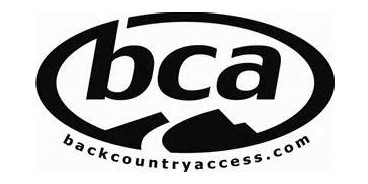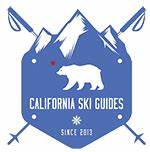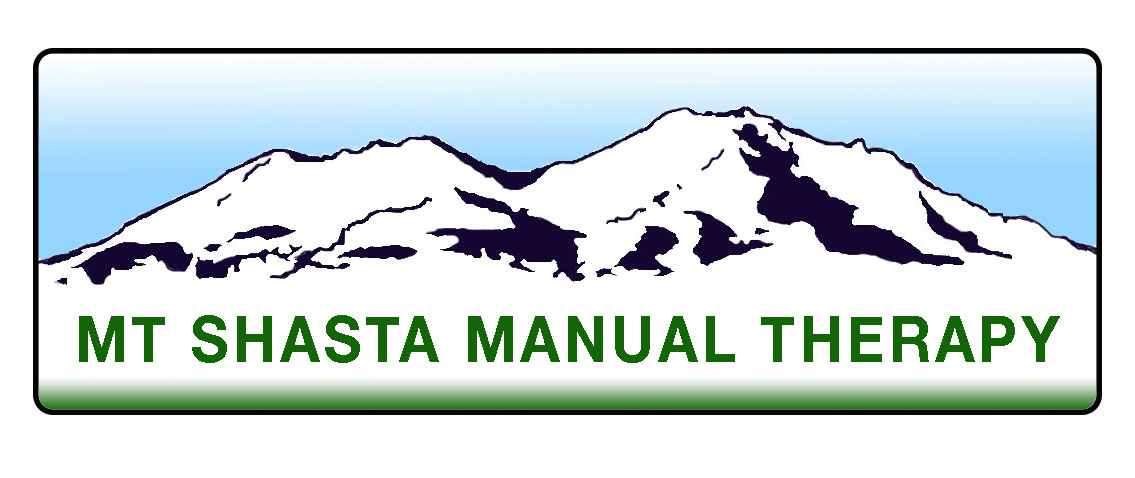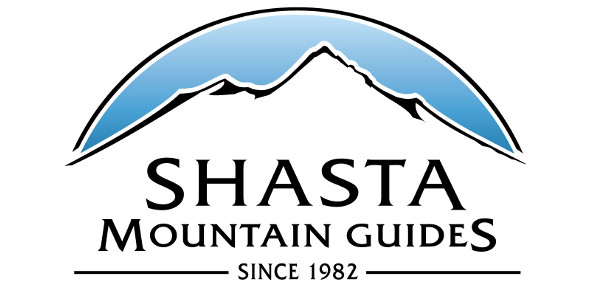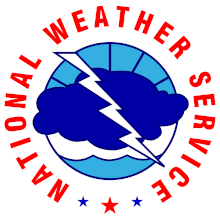You are here
Avalanche Advisory for 2016-01-22 07:08:50
- EXPIRED ON January 23, 2016 @ 7:08 amPublished on January 22, 2016 @ 7:08 am
- Issued by Jon Dove - Shasta-Trinity National Forest
Bottom Line
Overall, MODERATE avalanche danger exists near and above treeline all aspects. Pockets of CONSIDERABLE danger exists on wind loaded W-NW-N-NE-E-SE aspects above treeline. LOW avalanche danger exists below treeline for storm slabs above 7,000 ft. all aspects. Wind slab sensitivity will increase with additional loading from new snow. Slopes steeper than 35 degrees should be most suspect. Evaluate snow and terrain carefully, identify features of concern. Cautious route finding and decision making essential.
Avalanche Problem 1: Wind Slab
-
Character ?

-
Aspect/Elevation ?

-
Likelihood ?CertainVery LikelyLikelyPossible
 Unlikely
Unlikely -
Size ?HistoricVery LargeLargeSmall

New wind slabs have begun to form with the the recent blast of new snow and associated moderate to strong southerly winds. Wind slabs that are forming near and above treeline will only get thicker during the remainder of today's storm with another storm right on its tail. Slabs will likely be small to medium in size and depth and could easily bury a person if triggered. The sensitivity of wind slabs to failure is uncertain, and will only increase over the next 24-36 hours. Wind loaded aspects are, but not limited to, NW-N-NE-E facing slopes. Some SE and W slopes have likely seen some cross-loading as well. Both typical wind loaded zones below ridge tops, and non-typical mid-slope starting zones on slopes 35 degrees and steeper should be most suspect near and above treeline. Watch for obvious signs of wind slab formation which typically take the form of wind pillows, hollow sounding-hard snow, visible blowing snow and snow surface patterns, and areas underneath cornice formations.
Avalanche Problem 2: Storm Slab
-
Character ?

-
Aspect/Elevation ?

-
Likelihood ?CertainVery LikelyLikelyPossible
 Unlikely
Unlikely -
Size ?HistoricVery LargeLargeSmall

New storm slabs are developing with the significant amount of new snow received with today's storm in protected areas above 7,000 ft. below and near treeline. Storm slabs will get thicker with more snow on the way. Moderate to strong Southerly winds will limit storm slab formation above treeline. For today, late morning to mid-afternoon will present the best time to find storm slab instability at the tail end of the current storm. The new snow that has fallen rests on top of a sun/melt freeze crust that formed on Wednesday. This crust may act as a slick bed surface for the new snow on top. In a pit profile performed yesterday on a similar aspect to recent slide activity the interface of the rain crust and snow below was still reactive. It did, however, require a moderate amount of effort to trigger and did not propagate. Human triggered avalanches associated with this interface are unlikely. More concern should be given to the most recent new snow on top of the sun crust layer in the upper snowpack. For today, slopes 35 degrees and steeper above 7,000 ft. below and near treeline will be the most suspect for storm slab instabilities. Evaluate snow and terrain carefully.
Avalanche Problem 3: Cornice
-
Character ?

-
Aspect/Elevation ?

-
Likelihood ?CertainVery LikelyLikelyPossible
 Unlikely
Unlikely -
Size ?HistoricVery LargeLargeSmall

Cornice formations are abundant along ridge tops and should be given a wide berth while traveling in close proximity. They range from small wind lips of soft snow to large overhangs of hard snow. They can break off the terrain suddenly and pull back onto the ridge top catching people by surprise. Even small cornices have enough mass to be destructive and deadly. With the significant amount of snow already received and more on the way, cornices will only build in size. It is possible for cornice failure to trigger a wind slab avalanche on wind loaded slopes beneath it. It is possible this might have been the trigger for the avalanche that occurred yesterday in Sun Bowl.
Forecast Discussion
Precipitation began to fall over the Mt. Shasta area yesterday evening around 7 pm, and after 9 o'clock the following 7 hours would see between 0.1 and 0.17 inches of water per hour! The current storm system and the associated cold front will move across our area this morning with rain and snow tapering off mid-day. Snow levels with this system have hovered around 6,500 ft. We will see about a 12 hour break between systems with the next vertically stacked low pressure bringing showers back to the area overnight and into Saturday. Precipitation forecast models predict up to 1.42 inches of water with this next system with could translate into 12-18 inches of new snow above the snow line! Snow levels with this next storm system will lower to around 5,000 ft. This is good news for those who will participate in the Mount Shasta Ascension Backcountry Race this weekend. An upper ridge builds later in the weekend making the outlook for Sunday to be dry. Southerly winds are forecast to be high with the remainder of this storm, and remaining at that level with the approach of tonight's system. Wind speeds at mid-mountain levels (10,000-11,000 ft.) will blow between 50-55 mph with gusts close to hurricane force. Winds will begin to drop on Saturday, and continue to drop into Sunday. Winds near treeline will flex between 15-25 mph through Saturday.
THIS SEASON PRECIPITATION: Since October 1st (the wet season), we have received 18.83 inches of water, normal is 20.13 inches, putting us at 93% of normal. For the month of January and year of 2016 we've received 9.34 inches of water, normal is 4.92 inches, putting us at 189% of normal
Recent Observations
Yesterday I went to a SE aspect to see if there was a difference in layer structure, bonding, and stability to what I found on a NW aspect at a similar elevation on Wednesday. Both locations were near treeline. I dug a snow study pit to a depth of 130 cm to look at the layering of the past few storms with my focus being on the rain crust from the beginning of the week. The layers have formed "right side up", with heavier density snow under lighter density snow. I performed an extended column test (see graph below) with a resulting score of ECTN 21 Q3 at 37 cm deep, just below the rain crust. The results from the same kind of test performed on Thursday on the WNW aspect of Green Butte Ridge was a score of ECTN 18 Q3 at 41 cm deep. The weakness was identifiable as it started to shear, but did not propagate. The poor quality of shear, the moderate amount of effort needed for failure, and the fact that it neither suddenly popped of dropped during either test is noteworthy. It should also be noted that the similar results were on near opposite facing aspects.
Naturally triggered avalanche activity was observed yesterday in multiple locations above treeline in Sun Bowl and Old Ski Bowl. The avalanche that occurred in Sun Bowl (see photos below) happened late Wednesday, or sometime Thursday morning. It was given a avalanche rating of WS-N-D2-R3 (natural wind slab medium in size relative to path that could bury or kill a person). The starting zone for the slide was just below the ridge top in a commonly wind loaded area. A crown was not easily identifiable, and the reporting party said it likely was obscured by newly wind deposited snow. Cornice formation was also noted in the close vicinity to the starting zone. Two wind/storm slab avalanches had occurred in Old Ski Bowl at the base of Green Butte proper. A crown 12-24 inches deep, and perhaps 30 feet wide, was clearly visible along the bottom of the main cliff band in the center of the East facing aspect.
Avalanche danger for wind slabs and storm slabs has increased with the 6-9 inches of new snow already received, and more on the way. For today, avoid wind loaded W-NW-N-NE-E-SE aspects 35 degrees and steeper above treeline. Use caution and closely evaluate the terrain and snow conditions on slopes 35 degrees and steeper near treeline down to 7,000 ft. The snowpack below 7,000 ft. has consolidated quite well due to rain, heavy snow, and warmer temperatures. Any concerns for instability at this elevation and lower are minimal. Avalanche danger will be highest near and above treeline on open slopes for wind and storm slabs. Travel should still call for standard caution when wind loaded features, large snow pillows, leeward ridge lines and hollow sounding slabs are encountered. As for any storm slabs, only the new snow on top of the 3cm rain crust should be a concern for the storm slab avalanche problem. Cornices still remain and some are probably getting pretty big!
Quick Pit Profile from 1/21/2016, SE aspect base of Green Butte in Old Ski Bowl @ 7,960 ft. by Jon Dove:

Probable wind slab, natural avalanche (WS-N-D2-R3) in Sun Bowl occurring on 1/21/2016 with starting zone in top left of photo near ridge top, SE aspect, @ 8,800 ft. with a slope angle of around 37 degrees. Crown obscured by new wind deposit snow:

Sun Bowl slide viewed from the top of the bowl. Avalanche starting zone to the right of photographer's position:

Full Pit Profile from 1/20/2016, WNW aspect of Green Butte Ridge @ 8,000 ft. by Jon Dove:

Remember, your skin track up the hill is just as important as your ski line down. Choose safe up tracks... don't just follow the skin track that is set if you're not comfortable with the route. Breaking trail is a lot easier than getting caught in an avalanche. Also, tracks on a slope does NOT mean the slope is safe.
Only one at a time on a given slope. Use safe zones and make sure they are safe! Use good communication between group members. Avoid large groups. Talk about your route plan for the day and be ready to adjust your plan as you notice unstable snow such as shooting cracks, whumphing, recent avalanches, and/or rapid accumulation of snow.
_______________________________________________________________________________________________________________________________________________
LOCAL AREA ROAD, NORDIC and SNOWMOBILE PARK STATUS:
The Sand Flat cross country ski trails are in great shape and ready for your cross country skis or snow shoes. These are backcountry trails marked with blue diamonds on trees. Trails are not groomed. Snow shoers, please blaze a parallel trail to cross country skiers staying out of the skin track. These trails can be accessed via the Everett Memorial Highway. Thank you, and enjoy!
The Mt Shasta Nordic Center is open! These beautiful, groomed trails can be accessed via the Ski Park Highway. http://www.mtshastanordic.org
The Pilgrim Creek & Deer Mountain Snowmobile Parks are open! Trails are being groomed currently. Head to our "Education" tab on our website and find the snowmobile section for trail information, grooming status and other sledder resources!
The Castle Lake road is plowed to the Vista Point. The Everett Memorial Highway is plowed to Bunny Flat.
The Five Red Flags of Avalanche Danger any time of year include: 1) Recent/current avalanche activity 2) Whumphing sounds or shooting cracks 3) Recent/current heavy snowfall 4) Strong winds transporting snow 5) Rapid warming or rain on snow.
Weather and Current Conditions
Weather Summary
Good Morning! In Mt Shasta City at 0500, we have a current temperature of 44 F, two degrees warmer than yesterday at this time, with cloudy skies and light rain.
On Mt Shasta (South Side) in the last 24 hours...
Old Ski Bowl - 7,600 feet, the current temperature is 29 degrees F. Snow on the ground totals 110 inches with 6 inches new snow and 2 inches of settlement. Temperatures have ranged from 27 F to 33 F.
Grey Butte - 8,000 feet, the current temperature is 28 degrees F. Temperatures have ranged from 26 F to 30 F. Winds have been averaging 10-15 mph, southerly in direction with a max gust to 42 mph, south/southeast.
Mt Eddy Range (West side of Interstate-5)...
Castle Lake - 5,600 feet, the current temperature is 32 degrees F. Temperatures have ranged from 31 F to 35 F. Snow on the ground measures 65 inches with a no new snow and 1 inch of settlement.
Mt Eddy - 6,500 feet, the current temperature is 31 degrees F. Temperatures have ranged from 29 F to 34 F. Snow on the ground measures 78 inches with no new snow and 2 inches of settlement. Winds have averaged 2 mph, southerly in direction with a max gust of 12 mph, southeast.
Always check the weather before you attempt to climb Mt Shasta. Further, monitor the weather as you climb. Becoming caught on the mountain in any type of weather can compromise life and limb. Be prepared.
| 0600 temperature: | 32 |
| Max. temperature in the last 24 hours: | 35 |
| Average wind direction during the last 24 hours: | Southerly |
| Average wind speed during the last 24 hours: | 10-15 mi/hr |
| Maximum wind gust in the last 24 hours: | 42 mi/hr |
| New snowfall in the last 24 hours: | 4 inches |
| Total snow depth: | 90 inches |
Two Day Mountain Weather Forecast
Produced in partnership with the Medford NWS
| For 7000 ft to 9000 ft | |||
|---|---|---|---|
|
Friday (4 a.m. to 10 p.m.) |
Friday Night (10 p.m. to 4 a.m.) |
Saturday (4 a.m. to 10 p.m.) |
|
| Weather | Cloudy. Rain and snow, becoming all snow after 10 am. The rain and snow could be heavy at times. Windy | Cloudy. Snow and windy. | Cloudy. Snow showers and breezy. |
| Temperature (°F) | 37 | 24 | 31 |
| Wind (mi/hr) | South 15-20 mph with gusts to 35 mph | South 20-25 mph with gusts to 40 mph | South 15-20 mph with gusts to 30 mph |
| Precipitation SWE / Snowfall (in) | / 7-11 | / 13-19 | / 6-10 |
| For 9000 ft to 11000 ft | |||
| Friday | Friday Night | Saturday | |
| Weather | Cloudy. Snow and windy | Cloudy. Snow and windy with windy chill values as low as -17 | Cloudy. Snow showers. Windy with wind chill values as low as -14 |
| Temperature (°F) | 20 | 12 | 13 |
| Wind (mi/hr) | Southwest 50-55 mph with gusts to 70 mph | South 10-16 | Southwest 40-45 mph with gusts to 55 mph |
| Precipitation SWE / Snowfall (in) | / 10-16 | / 21-27 | / 9-13 |



















